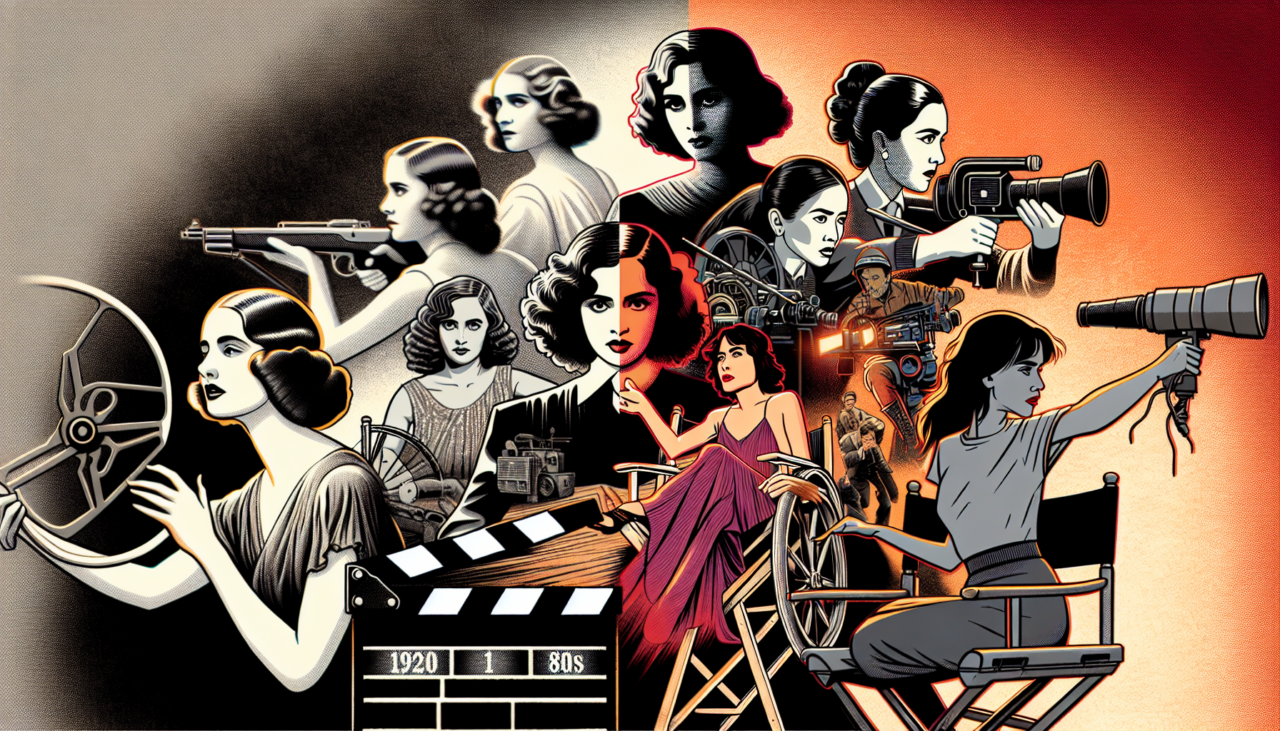For years, I’ve been captivated by movies, particularly those featuring strong female protagonists. As a child, I’d spend hours on the living room floor, wielding my cardboard lightsaber and pretending to be Princess Leia. Little did I know how challenging the fight for female representation in film would become. This paper explores the development of female characters in movies, examining their presence and evolution on screen.
The Early Days: A Troubling Start
In cinema’s early years, women were largely confined to limited, stereotypical roles. They primarily appeared as supporting characters, often playing either victims in need of rescue or romantic interests supporting male heroes. This scarcity of female presence reflected the patriarchal control over storytelling in the movie industry.
Silent Film Era
Clara Bow, embodying the flapper spirit of the 1920s, rose to prominence as a leading actress during the silent film era. However, even then, many films depicted women through the lens of their interactions with male characters, focusing on relationships without developing their individual stories.
The 1930s and 1940s: The Rise of the Femme Fatale
The introduction of sound technology in the 1930s led to the emergence of the femme fatale. Actresses like Barbara Stanwyck portrayed complex, morally ambiguous female characters, enriching the cinematic representation of women. However, these powerful roles often came with contradictory messages, suggesting that female power was inherently dangerous.
World War II and Women’s Roles
World War II saw women stepping into essential roles, both in the military and in the workforce. On screen, actresses like Rosalind Russell (as Hildy Johnson) and Katharine Hepburn, in various screwball comedies, showcased women taking bold action. While these characters demonstrated increasing complexity, their development was still largely tied to their social functions and relationships with men.
The 1960s and 1970s: A Fight for Recognition
As feminism gained momentum, women began to appear differently in movie storytelling. The feminist movement influenced film production, resulting in narratives that explored women facing challenges and seeking independence. Films like “A Raisin in the Sun” and “The Stepford Wives” explored the potential for creating more complex narratives.
Breaking Boundaries
Directors Jane Campion and Lina Wertmüller emerged as trailblazers, pushing boundaries in filmmaking. Their cinematic masterpieces, “The Piano” (Campion) and “Seven Beauties” (Wertmüller), presented complex female protagonists who defied societal norms. This era marked a growing understanding that women deserved recognition as main characters, not mere accessories to male storylines.
The 21st Century: Progress and Challenges
The 21st century has brought both progress and challenges to women’s representation in film. While contemporary audiences better understand and appreciate female filmmakers, the entertainment industry continues to grapple with male dominance. The box office success of films like “Wonder Woman” and “Black Panther” demonstrates that audiences embrace diverse, strong female characters. However, gender inequality persists despite these advances.
Behind the Scenes Representation
The representation of women in film is heavily influenced by the composition of crew members and camera operators. Women’s involvement in directing and production roles has gained increasing momentum in recent years. The female leadership of Greta Gerwig in “Little Women” is a prime example of how women directors can create powerful narratives that deeply resonate with diverse audiences.
Key Elements for Progress
- Increased visibility of female directors and writers
- Stories breaking stereotypes instead of reinforcing them
- Demand for diversity in casting and storytelling
The Importance of Authentic Representation
It’s crucial to represent multiple backgrounds, cultural experiences, and perspectives in film. Realistic depictions of women can help transform societal perspectives and spark conversations about female power and femininity. Films like “Promising Young Woman” and “Lady Bird” tackle modern-day issues, forcing viewers to reassess their beliefs about women and their life experiences.
Where Do We Go From Here?
While women have made notable progress in film history, female inequality remains a persistent challenge in Hollywood. Audiences must actively support films that include women at all stages of production and seek out diverse female stories.
Conclusion: A Future Full of Potential
As we acknowledge the accomplishments of women in film representation, we must also recognize the persistent challenges that remain. Female film creators have made strides, but countless female stories are still waiting to be told. Our continued support should focus on promoting authentic storytelling and backing creators who present diverse female perspectives. The future of change is within reach through the power of movies.
The pursuit of female representation in film becomes more attainable through resources that highlight women’s contributions to the industry and conversations that promote diversity. Our combined strength will ensure narrative representation, starting with our voices and extending to all others.
